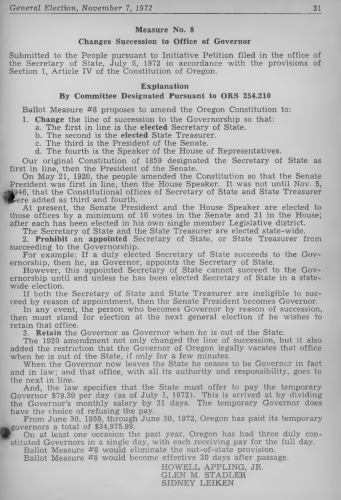
In the unlikely event that Republicans angry at Gov. Kate Brown for trying to stop climate change succeed in recalling her, Oregon might still have a Democrat as governor.
Many people have expected that Republican Secretary of State Bev Clarno would be the successor. That isn’t clearly the case under Oregon law.
Republicans would have to collect 280,050 valid signatures from Oregon voters in 90 days to force a recall. If either of two efforts to collect signatures recalling Brown were successful, she will have five days to resign (doubtful) or to file a 200-word statement of justification, which would appear on any recall ballot, supporting her work in office. A recall election would be held within 35 days after that.
Under Oregon law, the person to succeed the governor should he or she leave office is normally the secretary of state. That’s how Brown originally became governor: After Gov. John Kitzhaber stepped down in 2015, Brown, who was then secretary of state, was appointed. She later won the office in a special election in 2016, and again in 2018. Her term expires in 2022.
After the death of Republican Secretary of State Dennis Richardson earlier this year, Brown appointed Clarno, also a Republican, to the office. The key word here is “appointed.” In Oregon, the person who becomes the next governor must have been elected, according to one interpretation of the state constitution.
This dates back to 1972, when Tom McCall was governor, and according to a news story in the Bend Bulletin, whenever he left the state, the Oregon Senate president became governor. The story says that when McCall went boating on the Snake River one summer, Senate President John Burns became temporary governor every time the boat drifted to the Idaho side. When the boat drifted back to Oregon, he was removed from office — a total of eight times in one trip. Measure 8, which passed overwhelmingly in 1972, got rid of the law that dictated Oregon needed a temporary governor when the actual governor crossed state lines. It also changed the current line of succession from Senate president to secretary of state, followed by treasurer, Senate president and speaker of the House.
The language in the measure seems to specify that the person who becomes governor must have been “elected” to the position. Thus Democrat Tobias Read, the state treasurer, would become governor if Brown was recalled.
But David Schuman, University of Oregon law professor and retired Oregon Court of Appeals judge, disagrees with that interpretation.
Schuman explains in an email to EW that the constitutional provision in question prevents something else entirely. Under it, he says, an appointed governor is barred from appointing his or her own replacement. “‘The person so appointed,’ who is not eligible to serve, is the person appointed by the Secretary of State who has become Governor, to fill the open Secretary of State position that he or she vacated to become Governor,” he says.
Got that?
Schuman goes on to qualify his opinion, just slightly. “In the words of Mike Royko, ‘I may be wrong, but I doubt it.'”
This article was 12:30 pm Wednesday, July 24